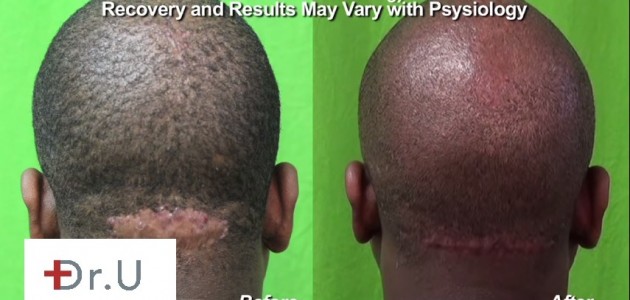Cicatricial Alopecia is a type of hair loss that occurs from the damage and destruction of the hair follicle. Acne Keloidalis Nuchae is listed as one of the cause of this condition.
Cicatricial Alopecia is a condition where the hair follicle is damaged and destroyed. Scar tissue replaces the follicular tissue. And patients lose their hair permanently.
There are many different causes for Cicatricial Alopecia. Acne Keloidalis Nuchae is considered to be one of them. In AKN, the hair follicle is affected by inflammation. The body reacts to the hair shaft as a foreign invader. And it tries to get rid of it through inflammatory attacks on the follicle.
Collagen fibers, which comprise the scars, are usually produced to repair skin tissue from different types of injuries such as this.
The exact causes remain unclear. However possible factors include
* high levels of androgens
* Persistent irritation from the environment (e.g. shirt collars)
* Seborrhea ( a common skin condition characterized by red, itchy rashes and white scales)
Acne Keloidalis Nuchae starts off as bumps due to the inflamed follicles. Medications such as steroids and cortisones are sometimes administered. This reduce sthe inflammation by constricting the blood vessels. However they are only useful during the early stages of the disorder.
Sometimes the lesions become infected with bacteria. And this will make these issues worse. However antibiotics can offer some relief.
Some success is possible using drugs. However, these medications are not capable of clearing the AKN tumors.
With AKN, hair loss is irreversible and the follicles are destroyed, leaving scar tissue. This is why Acne Keloidalis Nuchae is listed as a cause of cicatrical alopecia.
Treatment for Acne Keloidalis Nuchae
Advanced stages of Acne Keloidalis Nuchae require surgical excision. Doctors can create more acceptable cosmetic outcomes by aligning the scar along the posterior hairline. Patients can also choose to revise their scars and make them even less noticeable.

The Cicatrical Alopecia Research Foundation in Beverly Hills, CA is devoted to raising and providing funds for research on these disorders to hopefully develop effective treatments. Other objectives include education, awareness and advocacy.
The organization has recently worked with Zamacona Productions to create a documentary by the name of Cicatrical Alopecia. It features the experiences of real patients.
(video courtesy of the Cicatrical Research Foundation and Zamacona Productions)




